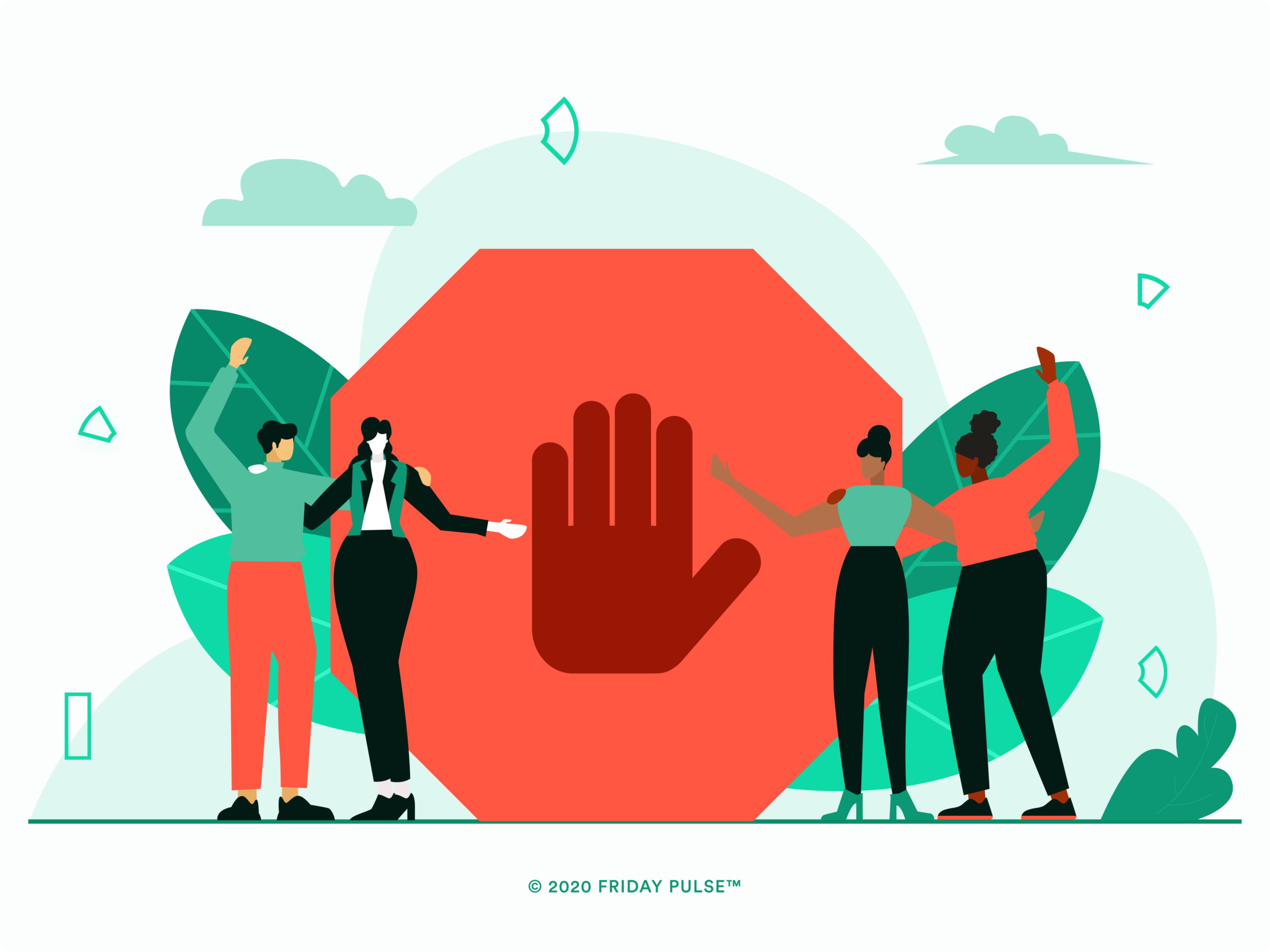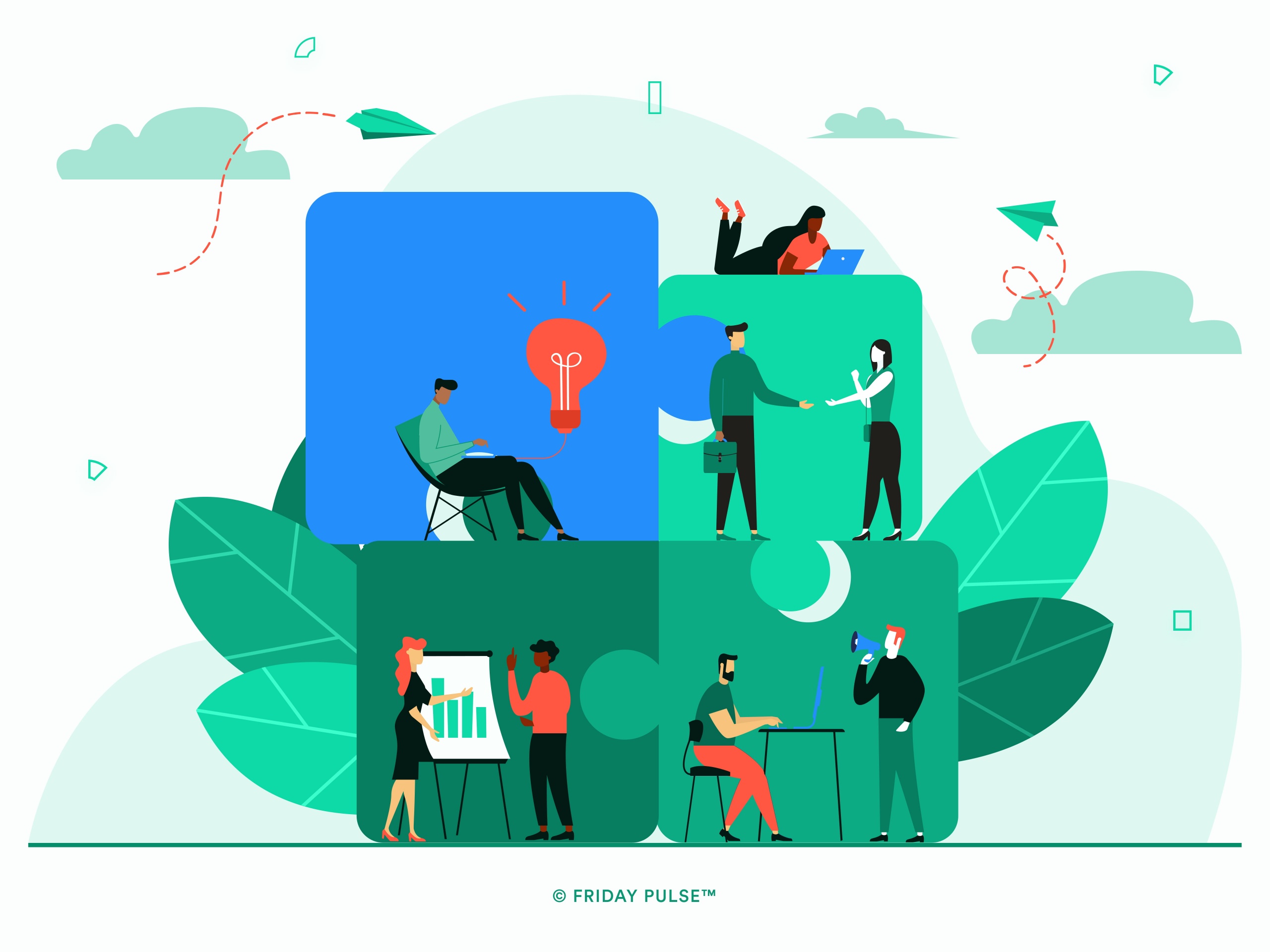This is a time of hurt, pain and frustration. We want to send a simple
message to our friends, colleagues, clients and everyone that we\'ve
come to love so dearly: we stand with you.
There is no place for racism, prejudice or hatred in the world — let
alone the business world. It is antithetical to the principles of
emotional and mental wellbeing that Friday Pulse seeks to uphold.
It’s likely you come to this blog because you\'re concerned about
the wellbeing of your people and sincerely want to help them. You
want to make sure they are safe and well. As leaders, it\'s your
responsibility to ensure the workplace is a refuge of physical and
psychological safety.
In short, the role is to make the room as safe as possible. While
implementing inclusive recruiting policies may help, racial issues and
experiences need to be discussed and shared to encourage empathy and
stronger emotional bonds among team members.
Your colleagues may look OK but, chances are, they\'re not
The workplace is supposed to be a “professional” environment. There\'s
an understanding that if you\'re at work, you maintain a certain
demeanour. Odds are, someone you work with or someone you have worked
with will be affected by these issues. In the UK alone, 14% of the
UK working-age population come from black, Asian, and minority ethnic
backgrounds. This number is expected to rise to 20% by 2030.
That means that there’s a good chance that you may have colleagues
that are currently dealing with intense emotions — long-lasting hurt, trauma, rage, sadness
— and are doing their best to hold it in and keep the workplace
“professional”.
When traumatizing events and police brutality are captured on camera,
the psychological impact on employees inevitably filters down to the
workplace. When this happens, how organizations respond can
significantly affect employee wellbeing and how employees feel about the
organization. Workplaces can become a place of psychological safety
or become another place that threatens racial identity.
Compassionate curiosity, professional empathy
It\'s vital to express compassionate curiosity to understand different
views. As it\'s a professional environment, we can
exercise professional empathy to ask better questions, be vulnerable and listen to
our colleagues’ experiences to create safe places.
*Sharing vulnerability (especially as a leader)
*It\'s not easy for leaders to appear vulnerable. Leaders stand to lose
a lot — respect of the team and/or important relationships. We might be afraid of saying
the wrong thing, and that might keep us silent. But silence is not the
right answer.
The first steps are to acknowledge what you don\'t know, understand your
world views, and then educate yourself on how to be a better advocate. Listen to a
diversity of voices, even if it makes you feel uncomfortable. Having
conversations in the workplace about racism and race issues will,
undoubtedly, be a little messy. But, your team holding in their fears
and emotions can be far worse.
*Ask deepening questions
*We create workplaces of psychological safety when we exercise empathy
and don\'t accept the surface level answer. \"I\'m fine\" is rarely the
whole truth. Ask follow-up questions that are open and empathetic to
understand new viewpoints. There\'s a lot of vulnerability here, and a
compassionate tone will help people open up.
A note — sometimes people aren\'t ready to talk, and that\'s fine. If
they see how well you treat those that do share, then there may come a
day where they will also share.
*Listen effectively
*We all have to process the severity of what has happened recently.
Combined with COVID-19, the unrest is proving to be a defining moment. An
essential part of this is listening to our teams and letting them share
their experiences. Leaders need to make sure that they switch into a
learning mode, and not a telling/teaching mode as employees share their
experiences. It\'s a vulnerable moment, but because we tend to keep our
bad experiences away from workplace discussion, it can be a moment that
creates stronger emotional bonds between team members.
Is there an ideal team size?
Last weekend, the protests in the UK toppled a statue of Edward
Colston in Bristol —
a slave trader who operated out of the port. For years, many petitioned
to have his statue removed as it represented an ugly part of history.
But there was no action. Finally, the crowd took it into their own hands
to pull down the statue and toss it into the river, doing in moments
what years of petitioning had failed to do. Since then, there have been
further calls for statues of slave traders across the UK to be removed.
This is what happens when you take too long to act on well-meaning
policies and are bogged in bureaucracy. Forward-thinking leaders would
have removed the statue earlier.
Now is the time to get ahead of the curve of history. The workplace is
a natural meeting place for people of disparate backgrounds, and can
absolutely be a part of the healing process. *Harvard Business
Review *listed some
initiatives to bring equality and uproot racism in the workplace:
- Commit to anti-racism policies and racial equity training
- Commit to pay equity and a living wage
- Commit to parental leave, health care coverage and sick leave
These are topics that are issues which will not go away and will
continue to resurface until they are addressed. Better to address them
now, than be forced to act chaotically.
Racism is a problem for everyone because it destroys the communities
that we inhabit. It undermines wellbeing. If one group’s comfort comes
by putting another group down, then there are no winners. With the right
amount of compassion, understanding and action, we can make the
workplace a safe place for everyone.



